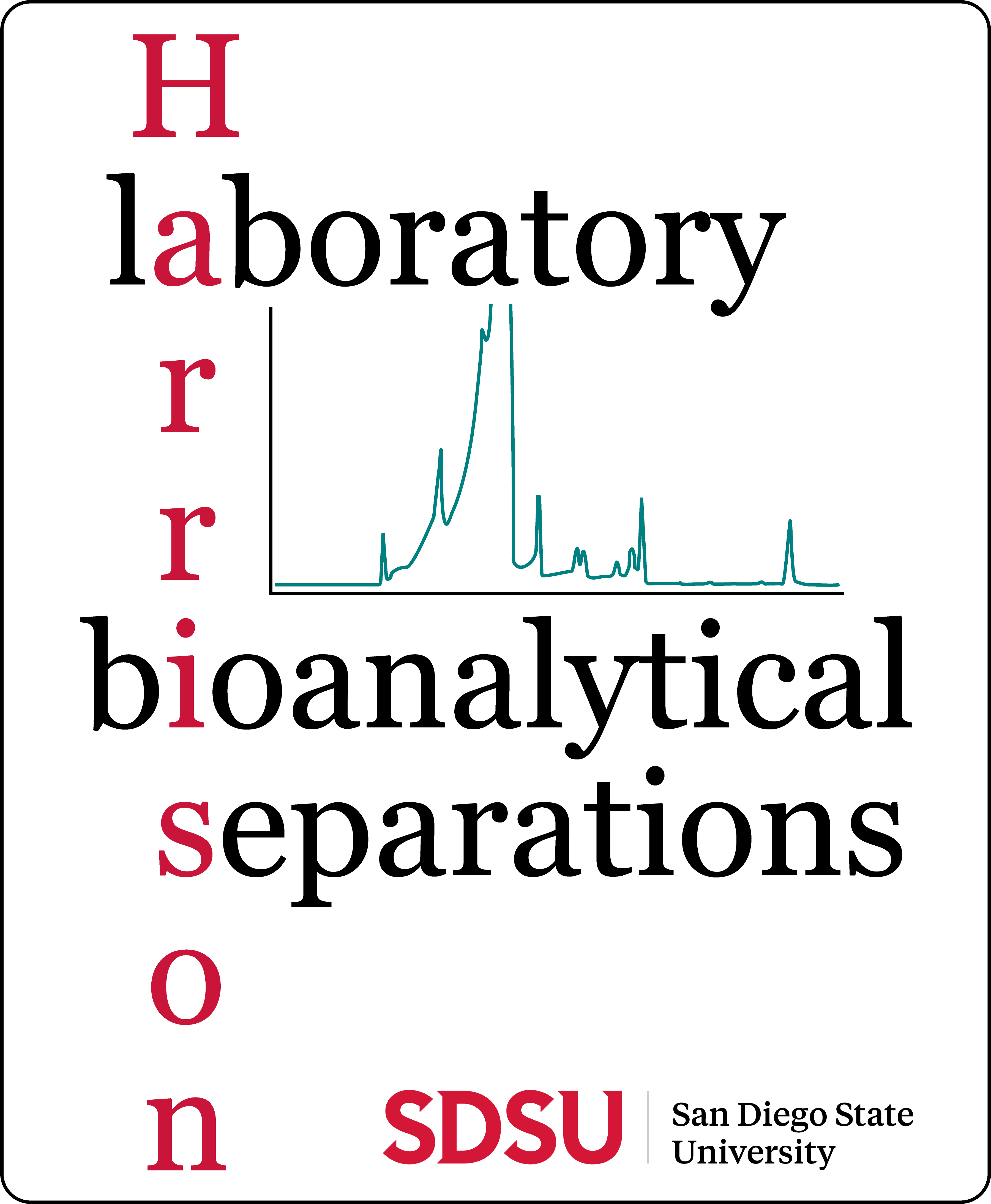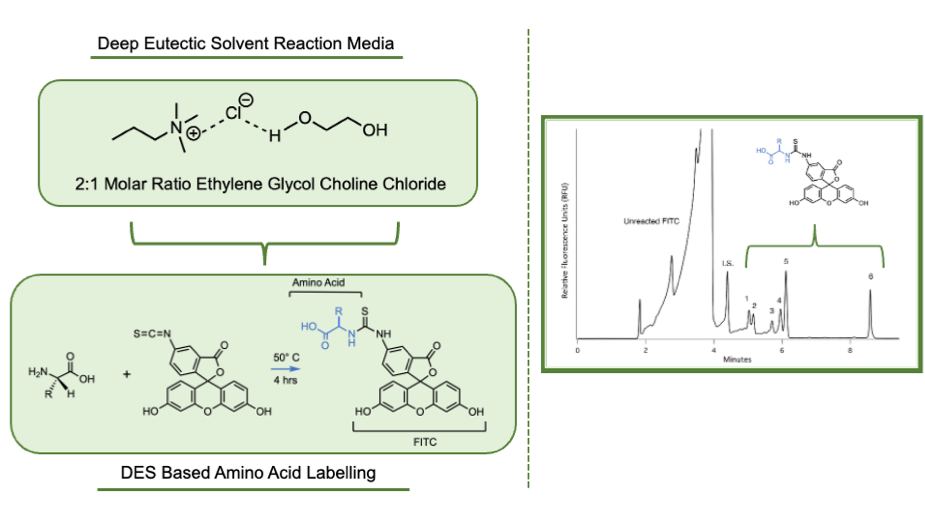
New Publication!
Newly published method to label amino acids in deep eutectic solvents.
HPLC 2022 Poster Award
Congratulations to Jessica and Karen for winning one of the HPLC 2022 Best Poster awards for their work on “Novel...
Harrison Lab Featured on KPBS
Recently Thomas Fudge, the science reporter for KPBS got in touch with us about the research that Jessica is doing...
Publicity of our research
Our NASA funded research looking for ways to detect chemical traces of past life has gained interest once again. The...
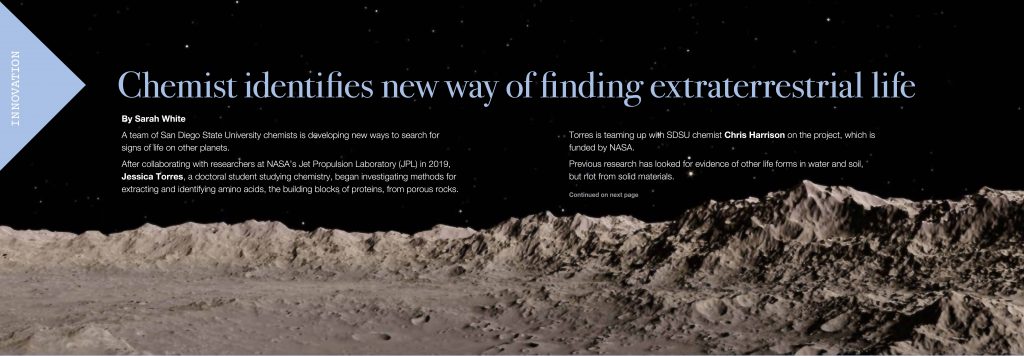
SDSU 2021 Research Highlights
Harrison lab research project featured in SDSU annual Research Highlights compilation.
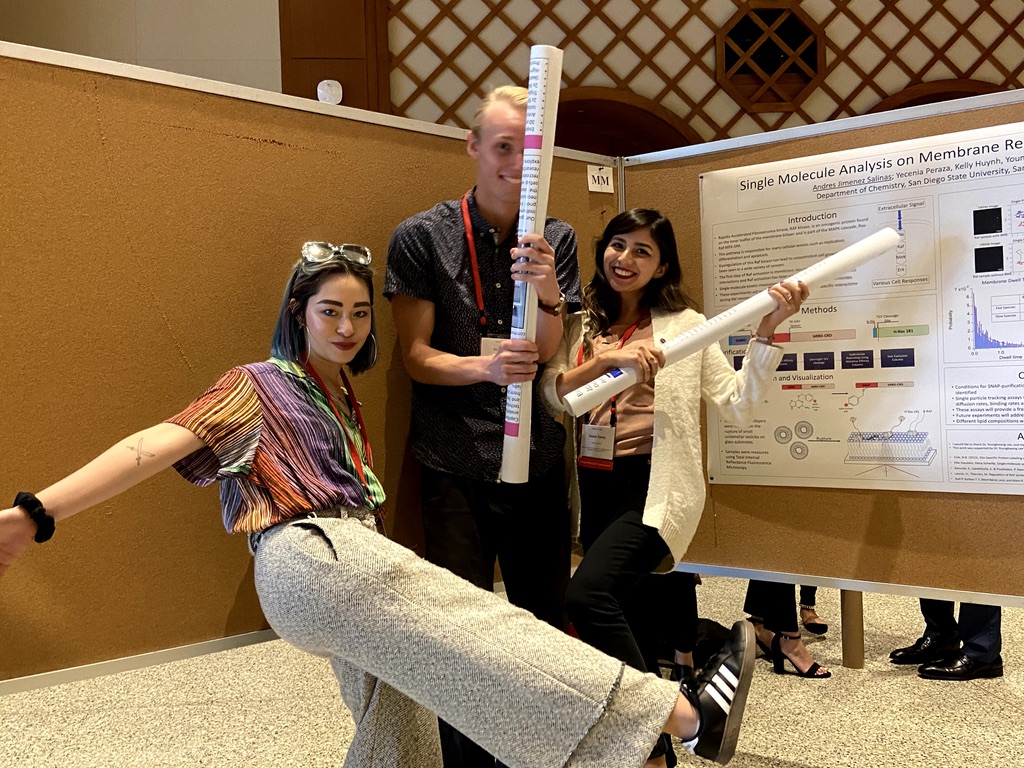
SRS 2020
Friday was SDSU’s annual Student Research Symposium (SRS) where grads and undergrads from across the campus present their latest research/works....
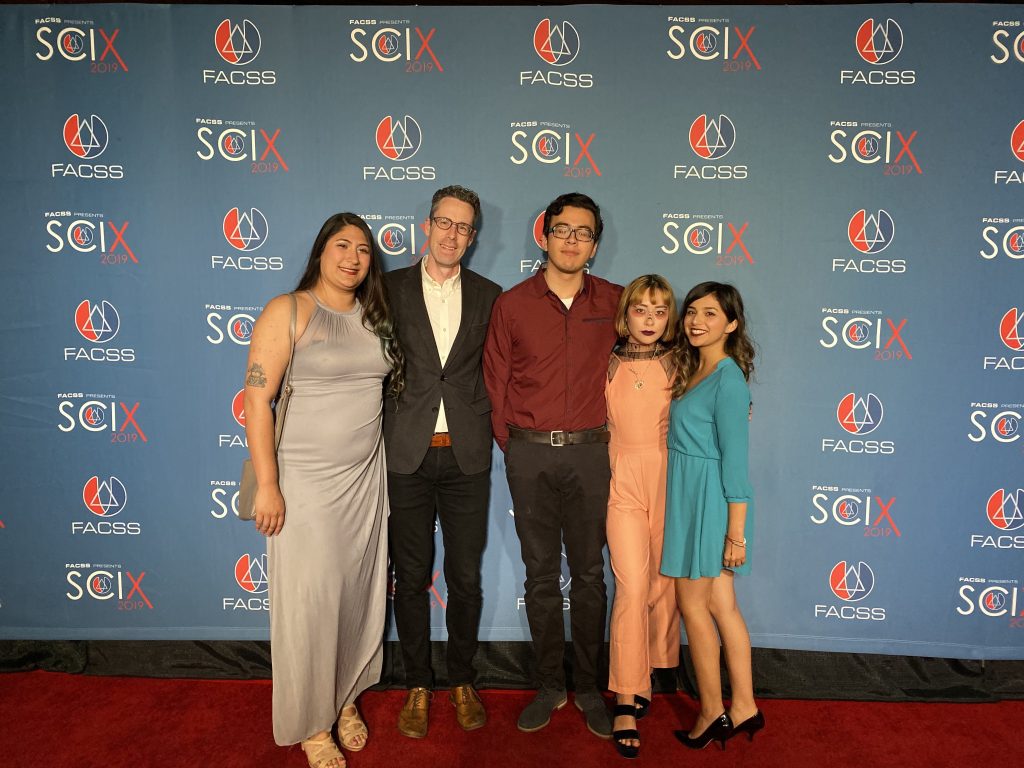
The Harrison Lab at SciX 2019
Last week (Oct. 13-17, 2019) part of the Harrison Lab took a trip up to Palm Springs to present some...
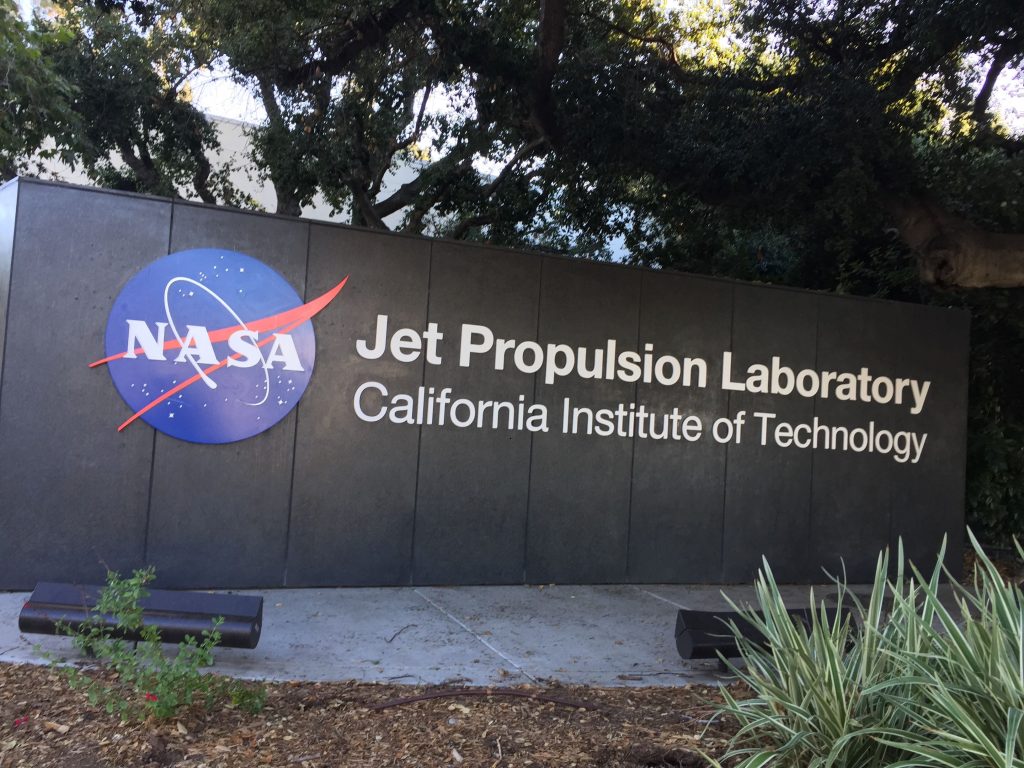
Internship at JPL
Congratulations to Jessica on starting an internship at JPL/NASA this week! Jessica will be working with Dr. Peter Willis to...
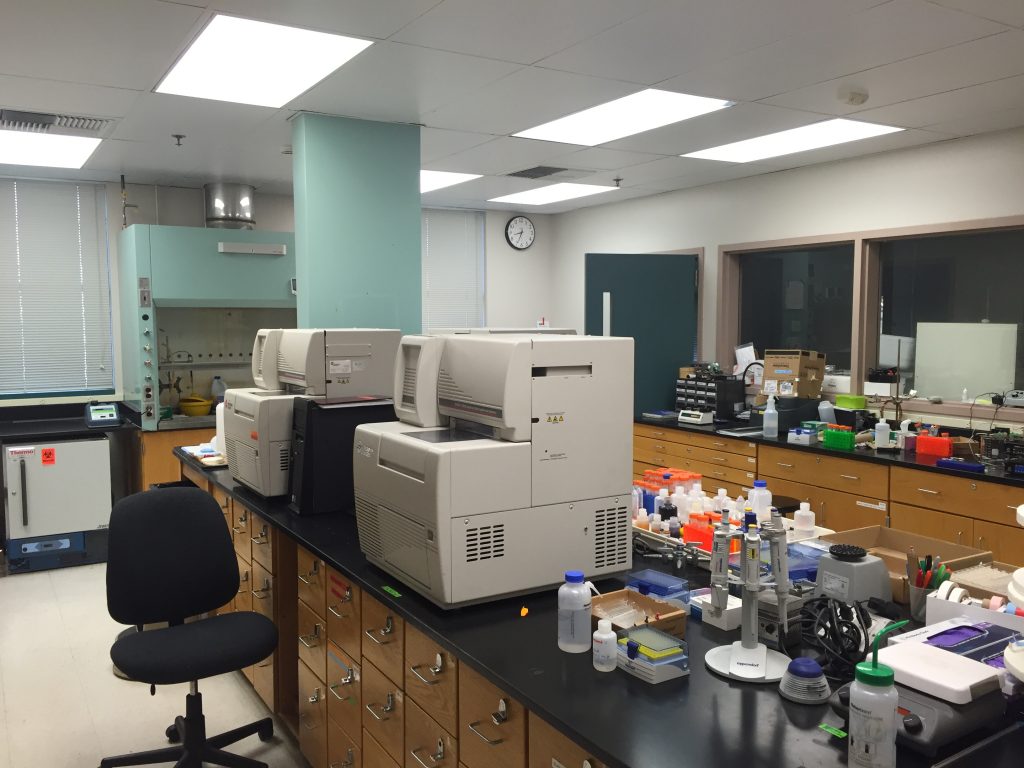
Congratulations Cat!
We’re very happy to announce that SDSU’s Summer Undergraduate Research Program selected Cat’s summer research project as one of the...
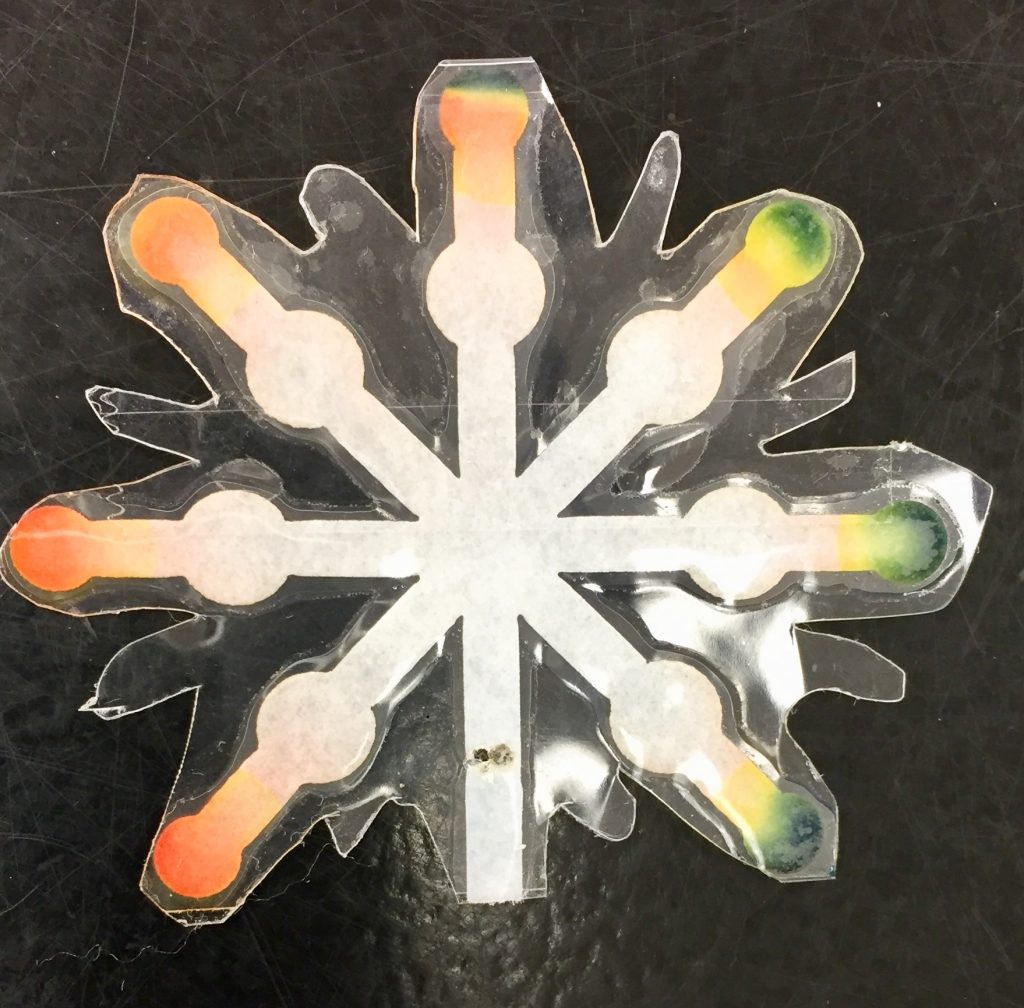
Microfluidics at SDSU’s Science Sampler
On Saturday (March 23rd) SDSU held its annual Science Sampler; a showcase of fun science activities for families to experience....
